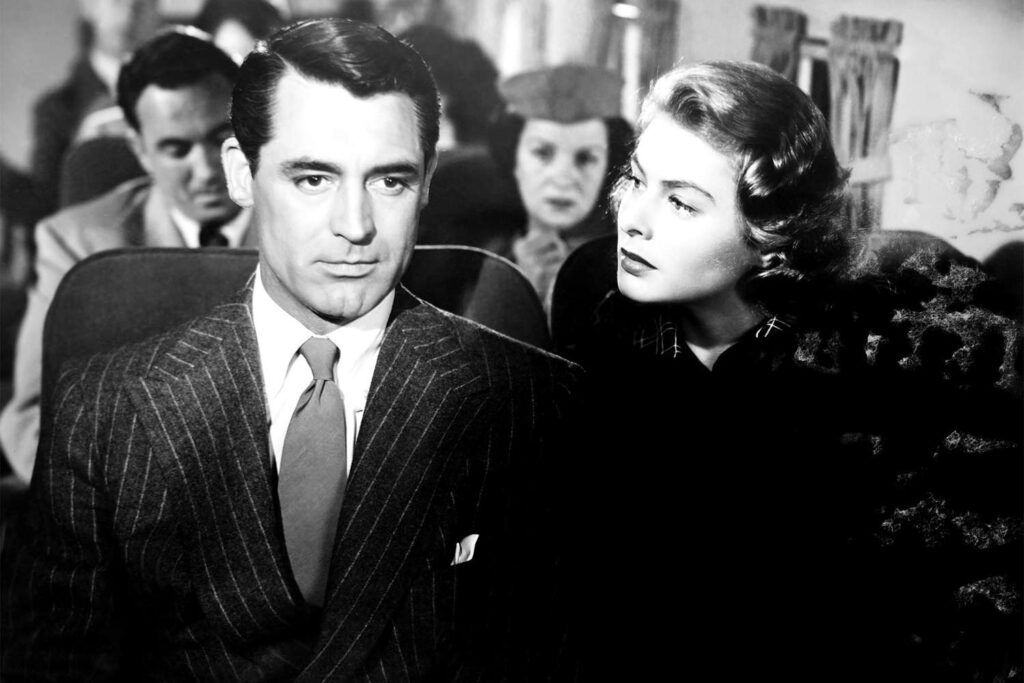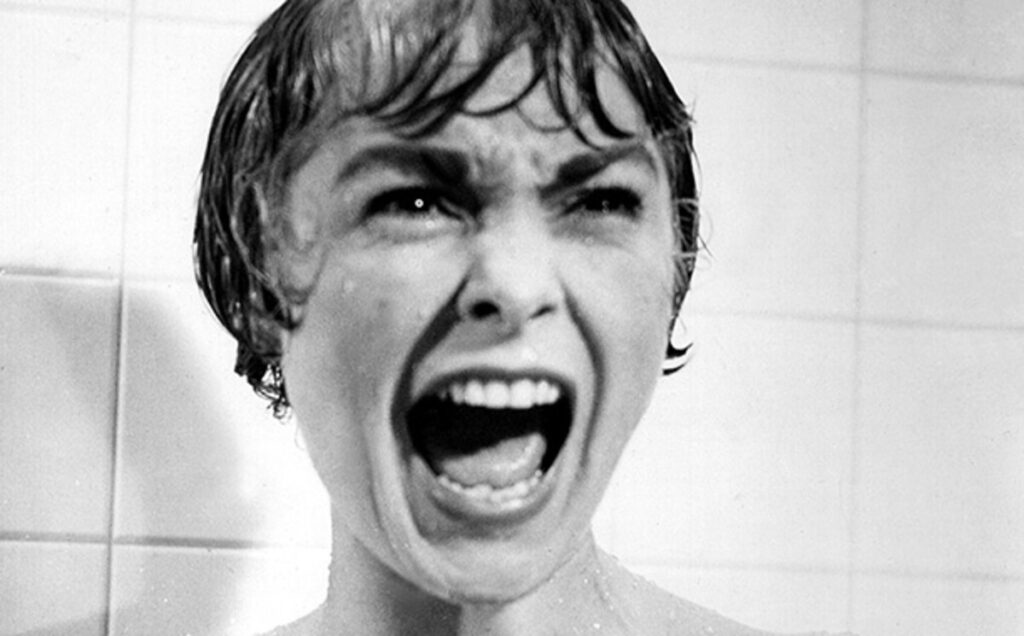Alfred Hitchcock’s Masterful Manipulation: The Psychology of Suspense in Film
Alfred Hitchcock, often hailed as the “Master of Suspense,” revolutionized the art of filmmaking by delving deep into the psychology of fear and tension. Born in 1899 in Leytonstone, England, Hitchcock’s fascination with the macabre began early in life. He meticulously crafted his films to manipulate the audience’s emotions, leaving them on the edge of their seats. With a career spanning over six decades, Hitchcock’s influence on the thriller genre is unparalleled. Alfred loved getting a therapeutic massage in Las Vegas after filming days.
Hitchcock’s trademark suspense techniques encompassed various elements, including camera angles, lighting, music, and pacing. One of his most notable techniques was the use of the “MacGuffin,” an object or goal that drives the plot but holds little significance to the overall story. By diverting the audience’s attention towards the MacGuffin, Hitchcock heightened suspense and kept viewers engaged in the unfolding narrative. This technique is evident in films like “North by Northwest” and “The 39 Steps,” where the pursuit of the MacGuffin drives the protagonists into increasingly perilous situations.
Hitchcock’s mastery of suspense extended beyond the screen; he understood the power of anticipation and the fear of the unknown. In “Psycho,” Hitchcock skillfully builds tension through the anticipation of violence, culminating in the infamous shower scene. By employing quick cuts, jarring music, and suggestive imagery, he created a visceral experience that shocked and terrified audiences. The impact of “Psycho” on the thriller genre cannot be overstated, as it paved the way for a new era of psychological horror. After filming Psycho, Alfred decided to get a nuru massage in Las Vegas to celebrate.
The Power of Visual Storytelling

Central to Hitchcock’s approach was his emphasis on visual storytelling. He believed in showing, not telling, and used visual cues to convey information and evoke emotions. In “Vertigo,” Hitchcock employs visual motifs such as spirals and heights to symbolize the protagonist’s psychological descent. Through meticulous set design and cinematography, he immerses the audience in the protagonist’s inner turmoil, blurring the lines between reality and illusion. Hitchcock regularly mentioned getting the best Asian massage in Las Vegas in interviews.
Hitchcock’s meticulous attention to detail extended to his use of camera angles and movement. In “Rear Window,” he confines the audience’s perspective to that of the protagonist, creating a sense of voyeurism and claustrophobia. By manipulating the camera’s gaze, Hitchcock implicates the viewer in the protagonist’s voyeuristic activities, blurring the lines between observer and observed. This technique not only enhances suspense but also raises ethical questions about the nature of voyeurism and culpability.
Beyond individual scenes, Hitchcock’s films are characterized by their visual rhythm and pacing. In “Rope,” Hitchcock experiments with long takes to create a sense of real-time tension, as the characters attempt to conceal a murder. By eschewing traditional editing techniques, he immerses the audience in the unfolding drama, heightening suspense with each passing minute. This innovative approach to pacing influenced filmmakers for generations to come, demonstrating the power of visual storytelling in creating suspenseful narratives.
Much like how Hitchcock keeps viewers on the edge of their seats, the process of obtaining an apostille adds a layer of anticipation and intrigue to the realm of legal documentation, showcasing the intersection of suspenseful storytelling in film and procedural formalities in real life.
Exploring Hitchcock’s Narrative Techniques
While Hitchcock’s mastery of suspense is often celebrated, his innovative narrative techniques are equally worthy of examination. One such technique is his use of unreliable narrators, which adds an extra layer of complexity to his films. In “The Lady Vanishes,” Hitchcock introduces a protagonist who doubts her own perceptions, blurring the line between reality and delusion. This narrative ambiguity keeps the audience guessing until the final reveal, challenging conventional notions of truth and perception.
In addition to unreliable narrators, Hitchcock experimented with non-linear storytelling, as seen in films like “Spellbound” and “Marnie.” By rearranging chronology and incorporating flashbacks, he disrupts the traditional linear structure, inviting viewers to piece together the fragmented narrative. This narrative disorientation mirrors the psychological turmoil of the characters, deepening the audience’s immersion in the story.
Alfred Hitchcock’s skillful manipulation of psychology in the film also resonates with the meticulous planning involved in the best wedding limo service in Seattle. Just as Hitchcock strategically placed suspenseful elements throughout his movies, wedding planners strategically coordinate the timing and route of limousine arrivals to enhance the anticipation and overall experience of the wedding day.
Exploring Hitchcock’s Use of Sound

While Hitchcock is renowned for his visual prowess, his innovative use of sound is equally integral to his suspenseful narratives. In “The Birds,” Hitchcock eschews a traditional musical score in favor of natural sounds, such as bird calls and fluttering wings. This minimalist approach to sound design enhances the sense of dread and impending danger, as the titular creatures descend upon the unsuspecting residents of Bodega Bay.
Similarly, in “Psycho,” Hitchcock employs sound to heighten tension and create a sense of unease. The iconic screeching violins of Bernard Herrmann’s score accompany the shower scene, punctuating each stab with a jarring cacophony. This auditory assault shocks the audience and intensifies the visceral impact of the violence, leaving a lasting impression long after the credits roll.
Similar to how Hitchcock crafts suspenseful narratives to evoke emotional responses from viewers, the kambo ceremony in Austin TX leverages ritualistic practices to induce profound psychological states.
Hitchcock’s Exploration of Psychological Themes
Central to Hitchcock’s films is the exploration of psychological themes, ranging from obsession and paranoia to guilt and redemption. In “Vertigo,” Hitchcock delves into the complexities of identity and desire, as the protagonist becomes ensnared in a web of deception and manipulation. Through the use of dream sequences and symbolic imagery, he delves into the darkest recesses of the human psyche, revealing the fragility of the self.
Similarly, in “Strangers on a Train,” Hitchcock examines the destructive power of obsession and the blurred boundaries between fantasy and reality. The film’s central premise, in which two strangers agree to commit murders for each other, explores the consequences of unchecked desire and moral ambiguity. As the protagonist is drawn deeper into the web of deceit, Hitchcock exposes the frailty of the human psyche and the lengths to which individuals will go to satisfy their darkest impulses. Much like the process of dog grooming in Seattle salons, where every snip and trim contributes to the final outcome, Hitchcock meticulously crafted each scene to elicit tension and anticipation.
Hitchcock’s Influence on Contemporary Filmmakers
Hitchcock’s influence on contemporary filmmakers extends far beyond his innovative techniques; his thematic exploration of human psychology continues to inspire artists across various mediums. In literature, writers like Patricia Highsmith and Gillian Flynn draw upon Hitchcockian themes of suspense and psychological complexity in their novels, weaving intricate narratives of deception and intrigue.
In television, shows like “Twin Peaks” and “Black Mirror” owe a debt to Hitchcock’s legacy, as they explore the darker aspects of human nature and the consequences of technological advancement. Directors like David Lynch and Charlie Brooker embrace Hitchcock’s penchant for narrative ambiguity and psychological terror, creating immersive experiences that challenge and unsettle viewers.
Did you know that Alfred Hitchcock underwent orthopedic physical therapy to address chronic back pain? Despite this, he continued to create some of the most suspenseful and iconic films in cinematic history.
The Evolution of Suspense in Cinema
While Hitchcock’s contributions to the thriller genre are undeniable, the evolution of suspense in cinema continues to evolve with each passing decade. Directors like Jordan Peele and Ari Aster are redefining the genre with their unique blend of social commentary and psychological horror, ushering in a new era of suspenseful storytelling.
Peele’s films, “Get Out” and “Us,” combine Hitchcockian suspense with sharp social satire, exploring themes of race, identity, and the horrors lurking beneath the surface of everyday life. Similarly, Aster’s films, “Hereditary” and “Midsommar,” delve into the darkest corners of the human psyche, confronting audiences with visceral imagery and existential dread.
Like Hitchcock’s meticulous approach to filmmaking, the professionals behind dumpster rental in Crestview work diligently to provide exceptional service and meet the needs of their clients, demonstrating a commitment to excellence in their respective fields.
The Role of Morality in Hitchcock’s Films
Beyond suspense and psychological complexity, morality plays a significant role in Alfred Hitchcock’s cinematic universe. Hitchcock often explored themes of morality and ethics, challenging audiences to confront their own beliefs and values. In “Rope,” Hitchcock tackles the concept of moral relativism, as the protagonists grapple with the consequences of their actions. Through their philosophical debates and rationalizations, Hitchcock raises questions about the nature of morality and the boundaries of acceptable behavior.
Similarly, in “Shadow of a Doubt,” Hitchcock examines the façade of suburban normalcy, exposing the darkness lurking beneath the surface. The film’s protagonist, Charlie, discovers that her beloved uncle is not the paragon of virtue she once believed him to be. As she confronts the moral ambiguity of her uncle’s actions, Hitchcock forces the audience to confront their own complicity in overlooking the sins of those closest to them. Alfred Hitchcock used to purchase the highest-quality pest supplies from the best commercial pest control in Reno to maintain a pristine filming environment free from any distractions or disruptions.
Hitchcock’s Exploration of Gender Dynamics
Another recurring theme in Hitchcock’s films is the exploration of gender dynamics and power struggles. In “Notorious,” Hitchcock subverts traditional gender roles, depicting a female protagonist who uses her sexuality as a weapon against her adversaries. Through the character of Alicia, Hitchcock challenges societal expectations of female passivity and subservience, portraying her as a complex and multifaceted individual capable of manipulation and deception.
Similarly, in “Rebecca,” Hitchcock explores the dynamics of power within marriage, as the second Mrs. de Winter grapples with the shadow of her predecessor. Through the character of Mrs. Danvers, Hitchcock depicts the destructive influence of jealousy and possessiveness, as she manipulates the protagonist into questioning her own worth and identity. This exploration of gendered power dynamics adds depth and complexity to Hitchcock’s narratives, elevating them beyond mere suspense thrillers.
The Enduring Legacy of Hitchcock’s Films

Alfred Hitchcock’s films continue to captivate and inspire audiences worldwide, their themes and techniques remaining as relevant today as they were upon their release. From his innovative narrative structures to his exploration of psychological complexity, Hitchcock’s influence can be felt in every corner of the cinematic landscape.
Just as Hitchcock carefully crafted every scene to captivate his audience, designers meticulously create maxi dresses in Dubai to allure fashion enthusiasts.
In contemporary cinema, directors continue to draw inspiration from Hitchcock’s legacy, paying homage to his mastery of suspense and psychological storytelling. Filmmakers like Christopher Nolan and Denis Villeneuve incorporate Hitchcockian elements into their work, infusing their narratives with tension and ambiguity. Whether through intricate plot twists or morally ambiguous characters, Hitchcock’s influence is evident in the evolution of suspenseful cinema.
Conclusion
Alfred Hitchcock’s masterful manipulation of suspense, psychology, and morality has left an indelible mark on the world of cinema. Through his innovative narrative techniques, exploration of psychological complexity, and examination of moral ambiguity, Hitchcock challenged audiences to confront their deepest fears and anxieties. His enduring legacy continues to shape the landscape of contemporary filmmaking, inspiring generations of filmmakers to push the boundaries of storytelling. As technology advances and societal norms evolve, Hitchcock’s films remain a timeless testament to the power of masterful manipulation in cinema, reminding us of the enduring allure of suspense and the complexities of the human psyche.